More than 3,000 runners recently gathered in Budapest for the NATO Run, an annual event bringing together soldiers and civilians from Allied and partner countries. Amid the ultra-fit troops and experienced runners, two humble editors of the NATO website tried their best to keep up – and enjoyed the sights of Hungary’s beautiful capital city along the way.
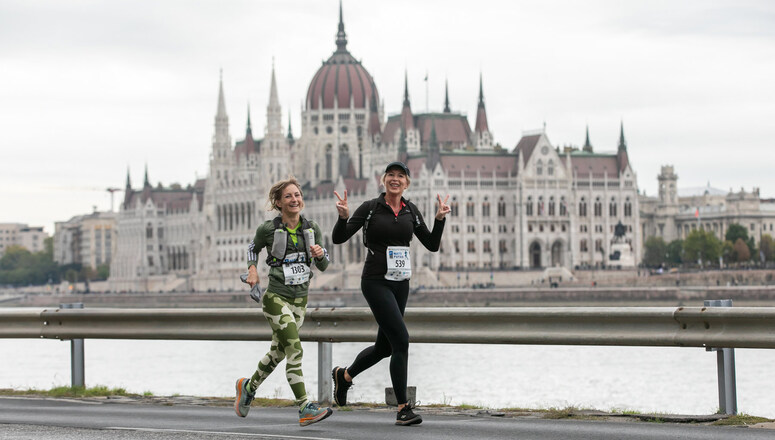
Pictured: two fit and smiling runners (AKA not us). (Photo: Budapest Athletics Federation)
We wait for the race to begin, in that quiet moment before the starting pistol sounds. For a few tense seconds, all the noise recedes. The military band has played its booming brass marches. The organisers have given their inspiring speeches about NATO Allies and partners sweating it out together. The warm-up session has helped loosen up our muscles and elevate our heartrates. Crossing our fingers that the grey skies will hold back the rain, we dream of the steaming thermal baths we’ll enjoy once the race is done.
And then, with a crack, the starting pistol fires, and we’re off.
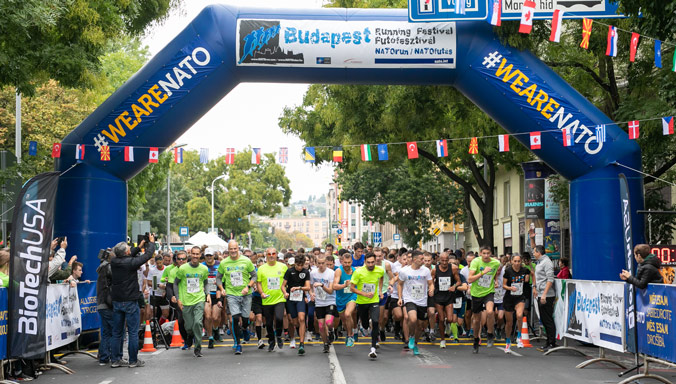
The start line of the 10km 2022 Budapest NATO Run, a moment after the starting pistol fires. (Photo: Budapest Athletics Federation)
We race along the empty roads, accelerating as we rush down to the Danube (cruising downhill is always wonderful until you remember that what goes down must come up eventually to reach the finish line).
We’re surrounded by hundreds of people in a big clump that will eventually string out as some people race ahead (those who will finish in just over 32 minutes, making the podium and claiming the glory) and others fall behind (us). Many people are wearing the official NATO Run shirts, but others are sporting branded T-shirts from other races across Europe and around the world. This year’s run includes participants from 18 countries: Hungary, of course. But also Austria, Bangladesh, Croatia, Czechia, Germany, Ireland, Israel, Italy, Lithuania, the Netherlands, Poland, Romania, Slovakia, Slovenia, Sweden, the United Kingdom – and at least two Canadians, whose only advantage is our innate ability to thrive in the somewhat chilly morning air.
The diverse crowd also includes racers of all ages – the youngest is only eight years old, the oldest is 84. As we race, we witness all sorts of running styles (some impressively efficient and some frankly bizarre, involving a perhaps unnecessary level of arm choreography). We also see different approaches to passing the time and keeping focused on the race: some people chat, some have headphones and listen to upbeat music to help maintain a specific pace, some stay silent, and others take increasingly blurry photos for the web article we have planned.
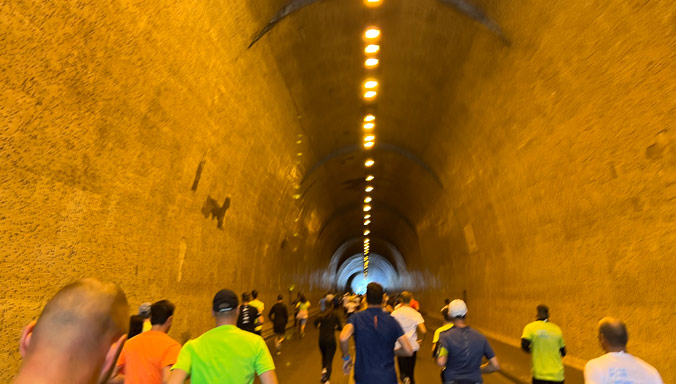
Pictured: an attempt to capture the moment with a sweaty-fingered snapshot.
Eventually, we go through a long tunnel that runs underneath Buda Castle and emerge beside the Danube. The mercifully flat route takes us past historical landmarks like the famous Széchenyi Chain Bridge and the ornate Hungarian Parliament.
The NATO Run itself has a much more modest history than these Habsburg-era monuments. But it has nonetheless become a fixture of the annual running calendar. This year’s run is the 17th edition.
Before coming to Budapest, back at NATO Headquarters in Brussels, we spoke to Zsolt Rabai, a former NATO staff member from Hungary who came up with the idea for the first NATO Run in 2006.
“The task was to reach out with something to the Serbian population that might bring a positive message, positive cooperation. And at that time I was running half-marathons, and I said, ‘Actually that might be interesting…'”
The first run was a special edition. It began as an idea to demonstrate the partnership between NATO and Serbia, with participants running from Horgoš in northern Serbia across the border to Szeged in southern Hungary. The event featured several significant moments, including the blessing of a Serbian Orthodox priest. The finish line was at an airport, and a paratrooper brought in the medals for the finishers.
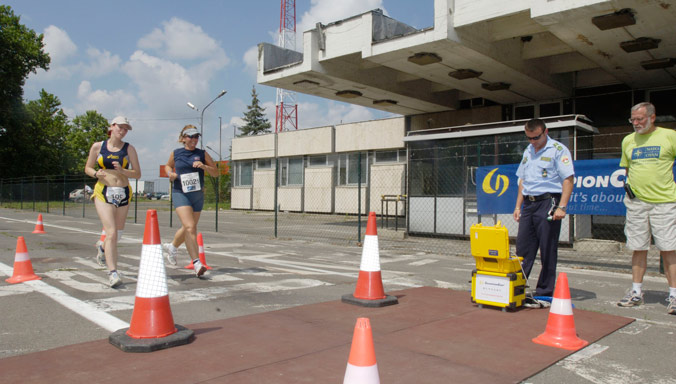
Runners crossing the border from Serbia to Hungary during the inaugural NATO Run in 2006. (Photo: NATO)
The following year, the run moved to Budapest, where it has been based ever since. Over the years, it has allowed tens of thousands of people to test their fitness, enjoy the beautiful views of the city and meet fellow running enthusiasts from Allied and partner countries.
It has also featured some notable quirky moments, including baton relays by military generals and a ‘stretcher run’, where two runners tested their paramedic skills by completing the race while carrying a stretcher. In 2020, in response to the COVID-19 pandemic, the organisers launched a Virtual Run that people could complete on their own, maintaining social distance while still participating in the event.
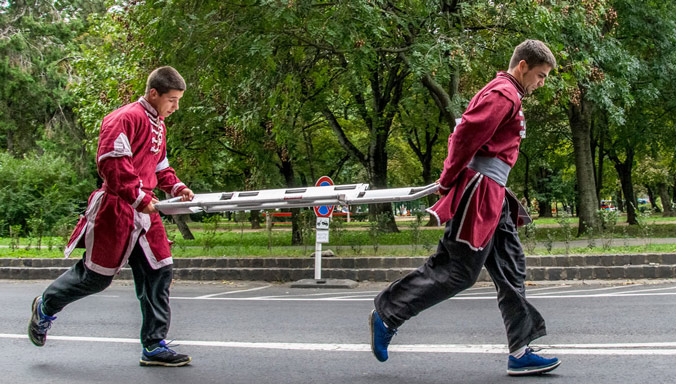
Runners carry a stretcher at the 2018 Budapest NATO Run. (Photo: Budapest Athletics Federation)
Eventually, we finish running along the Danube, turn back and head through the tunnel in the opposite direction. Just a couple of kilometres to go!
As the rain starts to speckle our sweat-dampened shirts, we summon the willpower for one last push up the hill to the finish line. At this point, the gentle raindrops are a relief, and give us the strength to pick up the pace for the final stretch. We sprint across the finish line, collecting our finisher medals and basking in a feeling of sweet success. Even sweeter, a volunteer hands us some orange soda and chocolate biscuits.
We join the crowd at the finish line and cheer on the incoming runners (including the final finisher: an elderly gentleman who makes it just before the 80-minute cut-off time). The rain starts to come down in buckets shortly after the run wraps up, and we seek shelter.
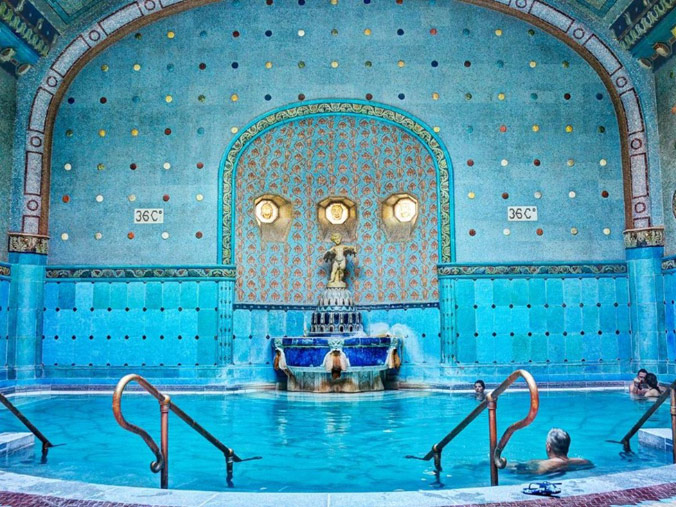
One of the beautiful Art Nouveau pools at the Gellért Thermal Baths in Budapest. (Photo: The Better Vacation)
No visit to Budapest would be complete without a visit to one of the city’s renowned spas. As we sit in the restorative waters, we reflect on our experience at the NATO Run.
In a sense, the NATO Run is a microcosm of NATO as a whole. We come from different countries. We all have different capabilities (some of us finish in 32 minutes, and some of us… do not) and different ways of doing things (we’re looking at you, flappy arms). At its core, NATO is a defensive military alliance whose purpose is to protect its member countries. That will always be its solid and unshakeable foundation. But over the past seven decades, the Alliance has grown into something more – a community of diverse nations with shared values, coming together not just for collective defence but for friendly cooperation. Not just on the battlefield, or in the boardroom, but on the racecourse as well.
